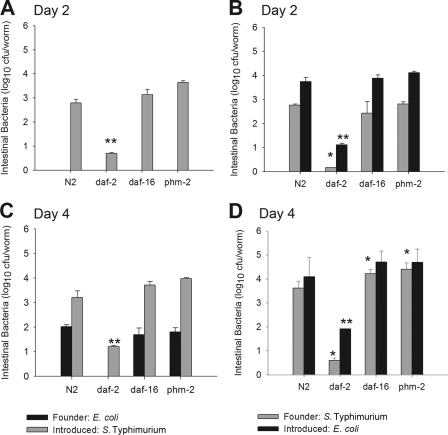Fig 2.
Resilience of bacterial gut colonization depends on the bacterial strain and on C. elegans age and genotype. Studies were done at 48 h (day 2) (A and B) or at 96 h (day 4) (C and D) following shift and competition assays, as described in Materials and Methods. C. elegans N2 or mutant strains were grown on lawns of the founder bacteria E. coli pSMC21 and then transferred to new plates seeded with S. Typhimurium pGB5 at 48 h (A) or at 96 h (C). Alternatively, C. elegans N2 or mutants were grown on lawns of the founder bacteria S. Typhimurium pSMC21 and then transferred to new plates seeded with E. coli pGB5 at 48 h (B) or at 96 h (D). Bacterial density was determined by plating the intestinal contents of lysed worms on selective media. Data represent means ± standard deviations (SD). Asterisks indicate a significant difference (P < 0.05) compared to the density of the founder strain recovered from N2 worms (*) or significant difference compared to the density of the introduced strain (**).

